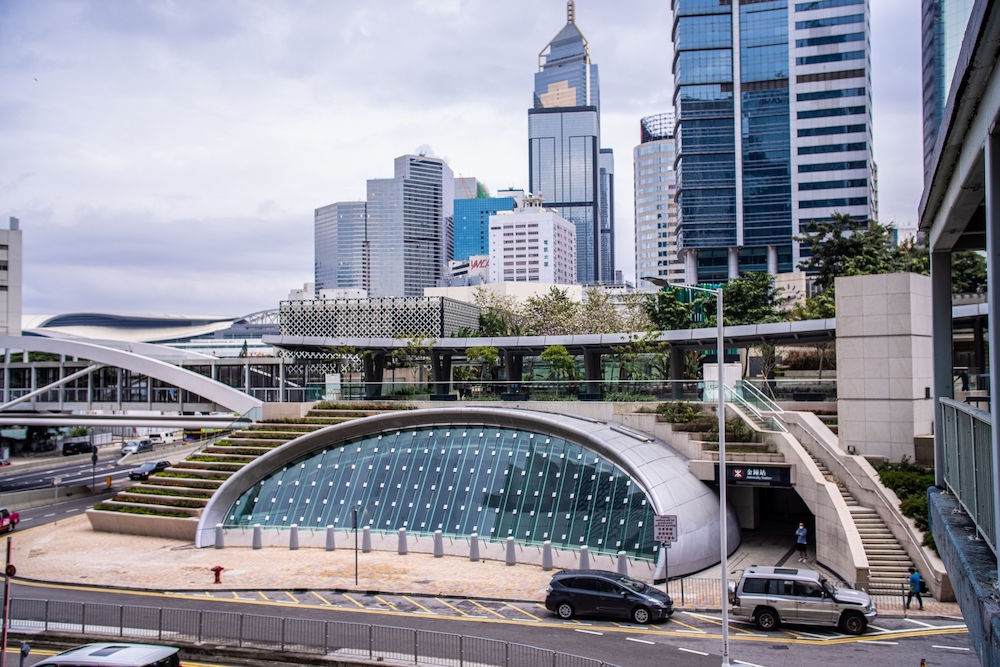The results are in: according to Facebook’s Q3 2013 financial report, the online social networking site had 728 million daily active users as of September last year, a year-on-year increase of 25 per cent. The number of monthly active users was 1.19 billion – that’s more than one in every seven persons in the world.
In its IPO filing last year, Twitter, another online networking site, revealed it reached 500 million tweets (or microblogs) per day.
What is significant is that both of these platforms, among others, offer an option for users to incorporate images in their messages – and many take it. This has facilitated a culture in which netizens are increasingly accustomed to looking at images rather than reading.
For those who want to market their products or events, it is a game-changing trend.
“Photos from your event educate new participants and the press,” says professional event organiser and social media manager Bess Hepworth. When working on projects such as Kids Ocean Day Hong Kong, a school outreach and activity programme for youngsters to learn about the ocean and sustainability, and TEDxHappyValley (Hong Kong), a social discussion platform, Hepworth relies on photographs for planning, story telling, promotion, documentation and publicity.
“Getting the first or best shot of something at your event is always useful – especially when dealing with the media. It’s the kind of credit you can leverage.”
If an image tells a thousand words, Nike has successfully married word and image to say even more with its “Find Your Greatness” campaign during the 2012 Olympics. Chinese-language social media expert and founding director of JLoh Communications, Juliana Loh, says: “It was a brilliant guerrilla ad campaign that used social media to carry their message to the masses.”
Nike was not a sponsor of the Olympics, and it had no access to official images. But with their own photography and clever copy writing they were able to create a strong semiotic resonance of time and place, making their campaign appear official.
And a bit of controversy did not hurt.
One of its posters featured an underwater shot of a swimming pool lane divider, accompanied by a line saying: “They can question your score, but they cannot question your greatness.” This message referred to Chinese swimmer Ye Shiwen’s Women’s 400 metre Individual Medley world record and gold medal, which invited allegations of doping.
Another referenced badminton duo Wang Xiaoli and Yang Yu, who were accused of match fixing.
Nike masterfully rode on the hype generated by the Olympics, earning publicity from the mega sports event without so much as an endorsement deal. And it worked. The campaign captured the China market on Weibo – the country’s own version of Facebook.
The message of the campaign struck a chord with Mainland Chinese. “It appeals to the patriotic spirit,” says Loh. “Plain images with copy that evokes emotions and patriotism are the kind that go viral.”
When it comes to English-language users in Asia, Hepworth says that Facebook is more popular than photo sharing website Pinterest and Twitter. Jay Oatway, author of Mastering Story, Community and Influence, and one of Hong Kong’s most well-known digerati, agrees.
“Facebook is best for events,” he says. “I manage events via a small Facebook group of organisers and volunteers to meet and discuss. We all send and share posts. There’s a lot to be said for starting with a small private group, and letting members spread news with their own circles and on public pages.”
Event pages are easy to create and use, but Hepworth warns not to bet on the “yes” list, as people can be fickle with Facebook replies. Hepworth usually factors into her expected attendance figures a contingency of spontaneous people – those who just turn up. Facebook is good for attracting this type of crowd, as long as you know how to grab their attention. “Post behind-the-scenes images of setting up and remind people what’s happening and they will come,” she advises.
Those who follow brands and events on social media typically want a more intimate, exclusive relationship with whatever they are following, and behind-the-scenes images and live posts make them feel “in”. These postings, especially when done during a multi-day event, generate buzz and interest. “Groups and events are like a back-stage pass, especially because of the time factor of news feeds,” Hepworth says.
Another popular social media platform is Pinterest. Unlike its counterparts it does not have time-based feeds and it is more about following a topic of interest rather than meeting people.
“Businesses should consider developing their influence in interest graphs and not social graphs,” says Oatway. When trying to grow his follower base he ‘pins’ what he thinks his followers would find interesting. “I was maintaining my Cross Fit board and decided to take my Paleo diet recipes to a separate board, and suddenly the number of people following exploded. I didn’t know Paleo diet was so popular,” he recalls. His number of Pinterest followers rose by 12,000 in two months.
Pinterest is about discovery. It’s an advantageous platform for companies to see what interests are trending and find ways to attract new followers. Clicking on a pin directs you to the website from which it originates, so in Hepworth’s words: “It’s like a fishing hook.
“The TEDx community is using Pinterest more as a scrapbook and archive,” she says. “The main use for current events is cross-posting pins to other platforms. It’s better for planning and archiving. Showcasing helps build credibility for future events.”
Create mood boards like décor, invitations, refreshments and infographics. This is useful for organisers but also provides a wealth of “back stage” information to share.
Hepworth archives various content, including press clippings, screen captures of tweets and presentation slides. “You can keep a lot of information in one place,” she says.

If an image already speaks a thousand words, how about a video, especially live feeds on Google Hangouts, or Hangouts on Air, which can be viewed in real time and then archived and edited on YouTube?
Company magazine in the UK made January 2014 edition a “social issue”. The production of it included editorial meetings held with selected readers via Hangouts on Air as well as broadcasted performances of a popular band, all viewable by anyone via YouTube. It was like giving out a cyber backstage pass to engage the online community.
Oatway uses Hangouts regularly – often as a way to allow community members to view and listen to talks they cannot attend personally.
One limitation is that only ten computers can join a Hangout, although they can always sign up for the waitlist. “Realistically, more than ten people make discussions difficult,” says Oatway, recommending it as more of a collaboration tool. Hepworth says: “People behave professionally on video and seeing one another betters communication.”
As an organiser, imagine how easily you can use Google Hangouts to expand the size of the audience “attending” your panel discussion. Based in Conneticut, US musician Daria Musk has found fame, almost entirely through Hangouts. With no followers, this daring musician started performing her music online, allowing people to tune in. Bit by bit, people all over the world were watching her perform and giving her live feedback. Now, she has performed to over 2 million people cumulatively. Musk never released a record, nor hired a publicist.
As with Hangouts on Air, despite being a “view only” option, it allows an infinite audience, and viewers may also tweet in questions.
“There’s something exclusive about being invited to a live Hangout,” she says, adding that the conversation can be unlimited as speakers or audiences can come and go without causing disruptions.
This year, CES, the consumer technology show, has embraced the platform by creating a mini event within a larger environment with a Hangout, like a backstage interview. The technology has also enabled delegates at events like CES to attend seminars without having to run around or worrying about being late. The added benefit of Hangouts on Air is that they air via, and are saved, on YouTube, which is well-established.
For the year ahead, Oatway says: “We need to understand the difference between the social graph and the interest graph – this is what Pinterest is leading in. Google+ has it too, in their ‘Communities’.”
Social is shifting, from large to small. “It’s not just about friends but what’s interesting. People are moving more to smaller niche networks – they don’t always want the noise of sites like Facebook,” he says. And in China, Loh points out that while WeChat takes the lead in the mobile market, Weibo serves a different purpose and is still highly capable of turning viral.
FAST FACTS
How it works – Weibo is a “microblog” functioning like a hybrid between Twitter and Facebook. You can post up to
140 characters with images from your Facebook account.
Why it is good – Works well on mobile phones.
Potential pitfalls – Censorship and language barriers: it only spreads news within China, or to those watching
Weibo-verse, often in simplified Chinese.
How it works – Follow friends’ news feeds, promote via Pages and Groups, and organise activities via Events.
Why it is good – Used by brands that engage in social media. Facebook is used in almost every country in the world.
Potential pitfalls – It’s friend-focused.
“Edge Ranking” pushes down brand posts in News Feed.
How it works – Pin images you love to your own boards. Curate your own gallery of “moodboards”, follow users you like and find new things.
Why it is good – You can find out more about what your audience is interested in and throw your works “out there”. Pins link back to websites they originate from and they never expire.
Potential pitfalls – It’s interest-based, so
you can tap interests but not specific groups of people.
Google Hangouts
google.com/+/learnmore/hangouts
How it works – Privately Hangout with up to ten computers. Go live online with Hangouts on Air via YouTube.
Why it is good – It connects people anywhere, enabling honest and visual discussion and collaboration. On Air automatically archives videos YouTube. You can connect with a number of people, including strangers.
Potential pitfalls – Only ten computers are allowed at a time.


